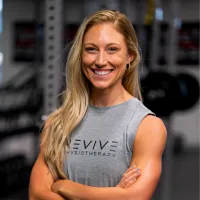Read our Blog

How to Age with Power
HOW TO AGE WITH POWER
This answer requires some understanding of basic cellular biology, but I’ll try to keep it simple and short.
You have organelles in your cells called mitochondria. These are often referred to as the “powerhouse” of the cell. They get this name because they are responsible for producing ATP, which is the primary source of energy in all living cells.
Mitochondria are also responsible for regulating your metabolism. They play a critical role in the breakdown of carbohydrates, fats, and proteins, converting these macronutrients into usable energy (ATP).
Why are these organelles important?
The root cause of aging is decreased cellular mitochondrial function.
Where are mitochondria most abundant in the human body?
Skeletal Muscle.
Signs of mitochondrial decline include fatigue, pain, and inflammation. Most people today associate these symptoms with normal effects of aging, but there’s something you can do about it!
RESISTANCE TRAINING
Exercise has the largest impact on mitochondrial health and function. Endurance training, interval training, and resistance training all improve mitochondrial function. However, once you hit 30, your body naturally starts to lose muscle mass and strength. Resistance/strength training is the best form of exercise to preserve or increase the amount of muscle you have.
It’s a hard truth that most people don’t want to hear. If you are not actively strength training, you are losing muscle and aging faster.
Less muscle = less mitochondria = less energy
In order to continue doing the things you love, you need muscle.
I could write about training programs and building muscle for days, but I’ll spare you on that for now. If you have questions about exercise and resistance training, just reply to this email!
Aside from exercise, there are more ways to preserve your muscle and mitochondrial health.
PROTEIN
There’s a lot of fear and question around protein. This is common topic among patients in my clinic. Most people know what food is healthy vs unhealthy, but their perception of protein and how much they are actually eating is very skewed.
For more information on different protein sources, Click here.
We don’t eat protein for protein. We eat protein for the amino acids that it is made up of. Animal protein contains all of the essential amino acids we need in order to build new muscle. Plants on the other hand, do not contain all of the essential amino acids required to build muscle. Animal muscle is designed to build muscle and plants are designed to build new plants.
The current recommended daily amount for protein established by the Nutrition Board of the National Research Council is 0.8 g per kg of body weight. This equates to 0.37 g protein per pound of body weight. This data is based on 18 year old males and is the minimum amount required to prevent deficiency.
These subjects are in the prime of developmental years. Does it really make sense that the protein recommendation for a growing 18 year old male should be the same as aging adults who are actively losing muscle mass? NO!
If you want to preserve and build muscle, maintain function, and age powerfully, it is now advised to consume 1g of quality protein per pound of body weight.
If sufficient protein is currently a staple in your diet and you participate in resistanance training at least 2 days a week, you are on the right track! Keep it up and don't let anyone, regardless of your age (not even your physician) tell you to stop. Your body will thank you for many years to come!
If you are thinking, “there’s no way I can eat that much!” There are a few alternatives you can supplement with.
SUPPLEMENTS
If you are struggling to consume enough protein due to lack of hunger, you can supplement with Essential Amino Acids. This typically comes in the form of powder that you mix with water and does not have the same satiating effects as protein.
Multiple health experts shared the benefit of creatine for both muscle and brain health. As mentioned before, the root cause of aging is decreased mitochondrial function. Mitochondria are responsible for creating ATP, the primary energy source in our body. Creatine is a naturally occurring compound in our bodies that helps replenish ATP. The recommended daily dose is 5-10g/ day.
Supplementing creatine can give you more energy and more power!
Creatine is also found in the brain providing energy to neurons. Supplementation can support cognitive function and may benefit conditions like neurodegenerative diseases.
If you are looking to maximize muscle health, energy, and overall function, creatine is a completely safe supplement to add to your daily routine.
STILL WANT MORE?
There is new and strong research for a supplement called Urolithin A. This is a natural post biotic found in the gut microbiome. It has the ability to cross the gut barrier and interact with mitochondria similar to how exercise effects mitochondria. The current recommended daily amount is 500-1,000 mg.
Even though Urolithin A is a derivative of natural food sources, there are two reasons why supplementation is necessary to increase its abundance in your body.
Urolithin A can be derived from pomegranate, walnuts, raspberries, and strawberries, but it would take a ridiculous amount of these foods to produce a meaningful and effective quantity
Due to adaptations in the human body, not everyone has the ability to produce Urolithin A.
Aside from individuals who want to take every action possible to optimize their health and longevity, this supplement can be particularly beneficial for people hospitalized on bed rest or people recovering from injury/surgery – my people!!
If you have ever experienced significant injury or surgery, you know how quickly your body loses muscle. Because Urolithin A interacts with mitochondria in a similar way that exercise does, this can help maintain the quality and quantity of muscle during times of inactivity.
There are currently no contraindications for Urolithin A because it is a derivative of natural food sources.
TAKEAWAY:
The root cause of aging is decreased cellular mitochondrial function. Mitochondria are most abundant in skeletal muscle. There are 4 things you can do to preserve and maximize mitochondrial health and to age with power.
Strength Train: 2-5 days per week
Prioritize protein: 1g per pound of ideal body weight
Creatine: 5-10 g/ day
Urolithin A: 500-1,000 mg/ day
About the sources:
Dr. Gabrielle Lyon, DO is a board-certified family physician and on the forefront of modern medicine focusing on skeletal muscle. She is a New York Times best selling author known for her recent book FOREVER STRONG: A New, Science-Based Strategy for Aging Well.
JJ Virgin is a triple board-certified Nutrition Expert, Fitness Hall of Famer, and 4-time New York Times bestselling author. She is on a mission to change the narrative from aging gracefully to aging powerfully.
Our one-on-one treatment sessions ensure that you fully understand your body and take ownership of your health so that you can have control over doing the things you love!
Send us a Message
Let's Have a Chat
954 - 519 - 4185
Find us at
2852 E Oakland Park Blvd
Fort Lauderdale, FL 33306
2024 REVIVE PHYSIOTHERAPY | ALL RIGHTS RESERVED


